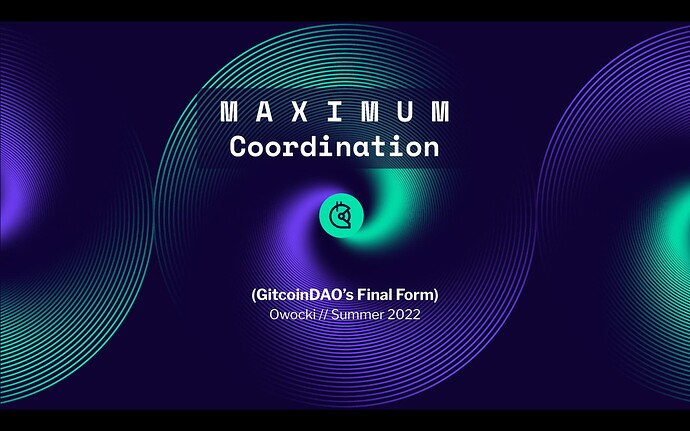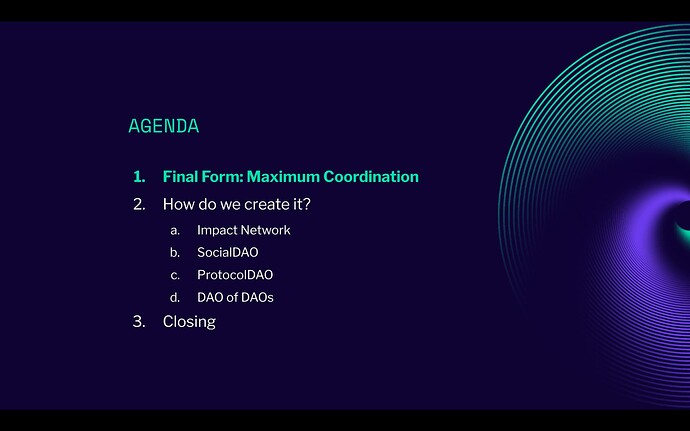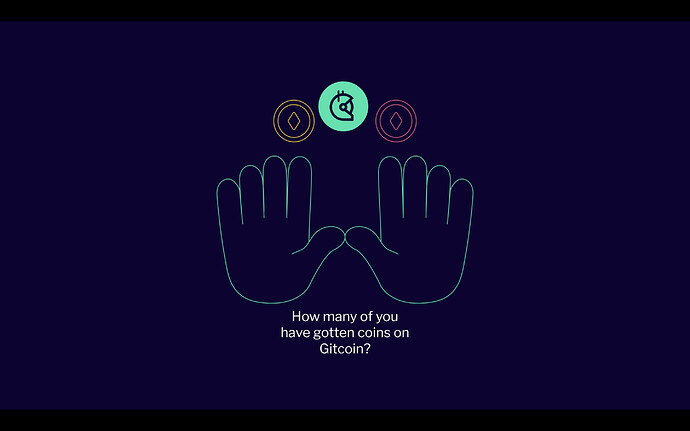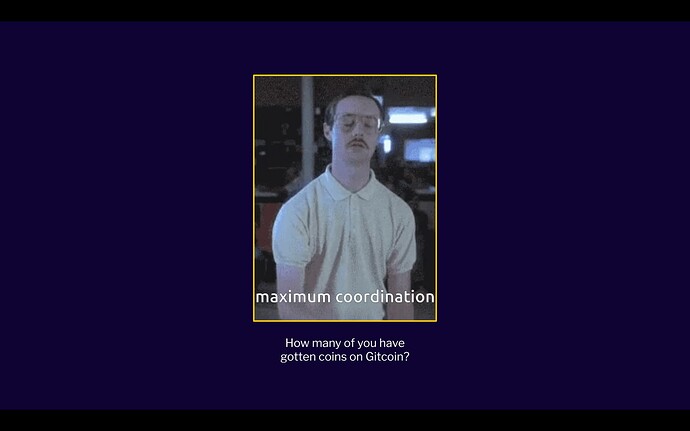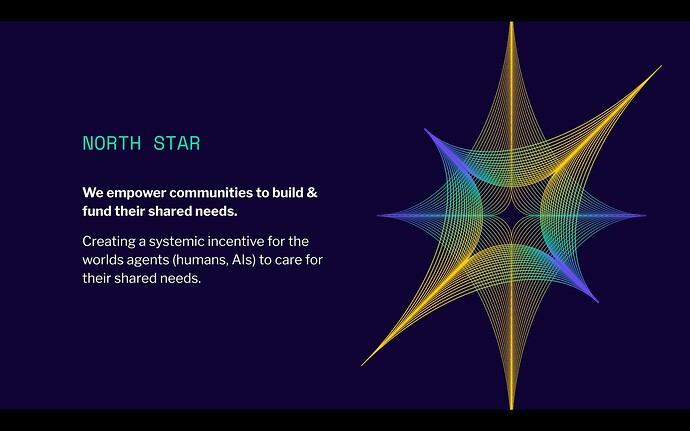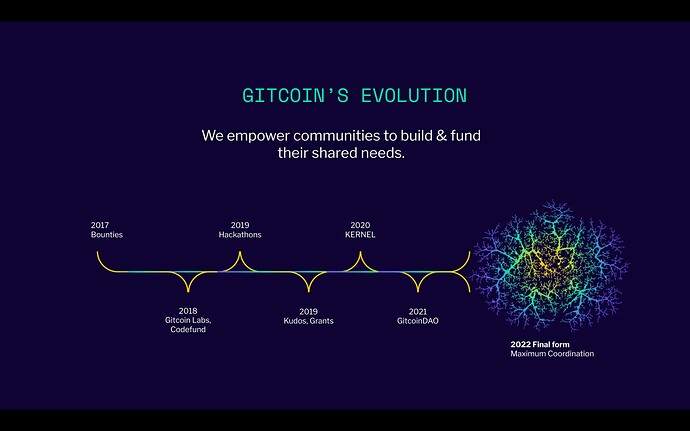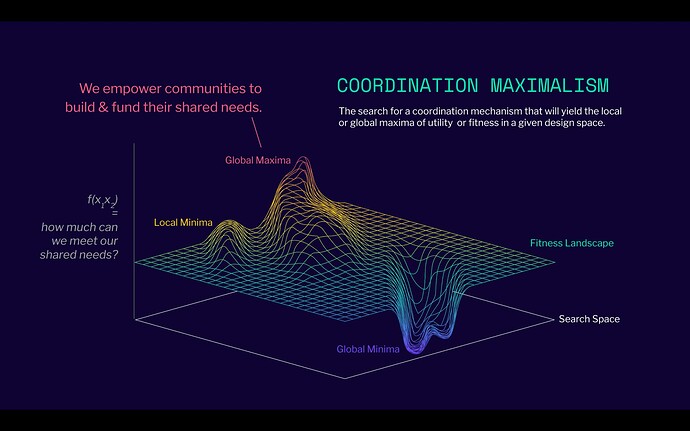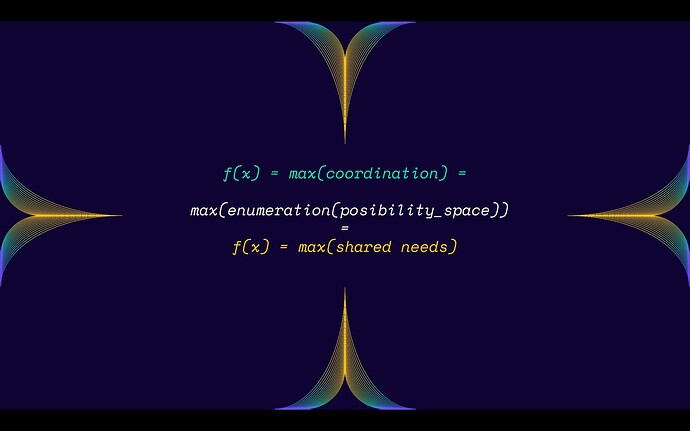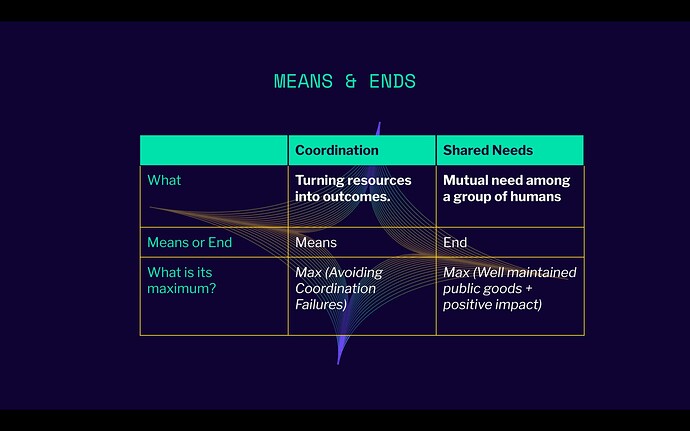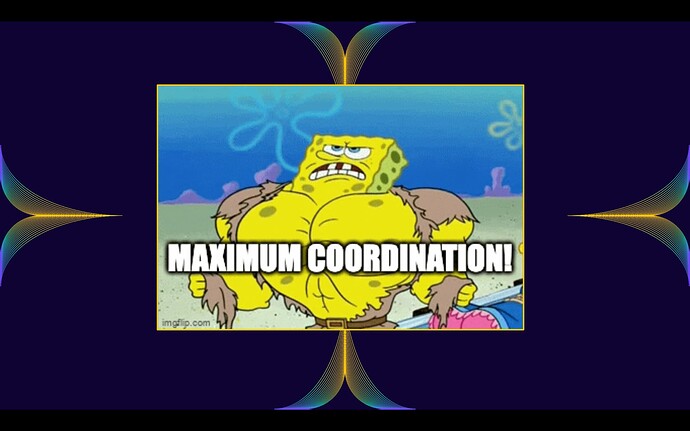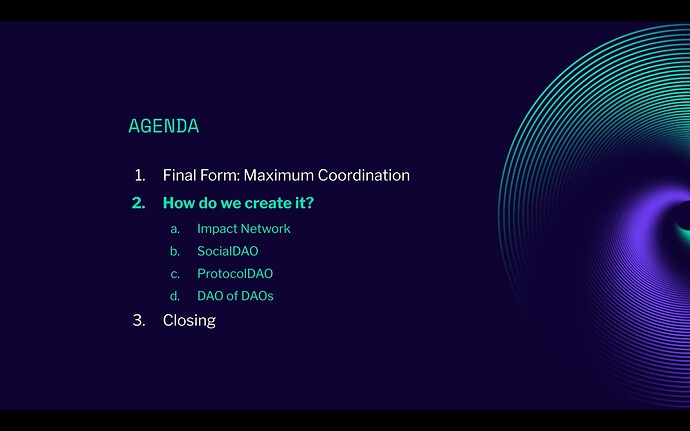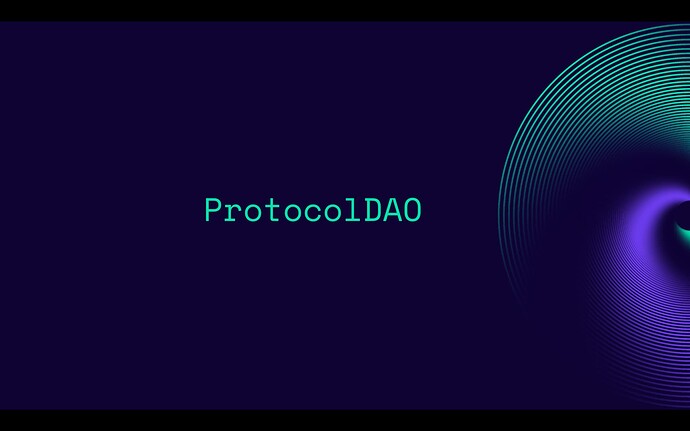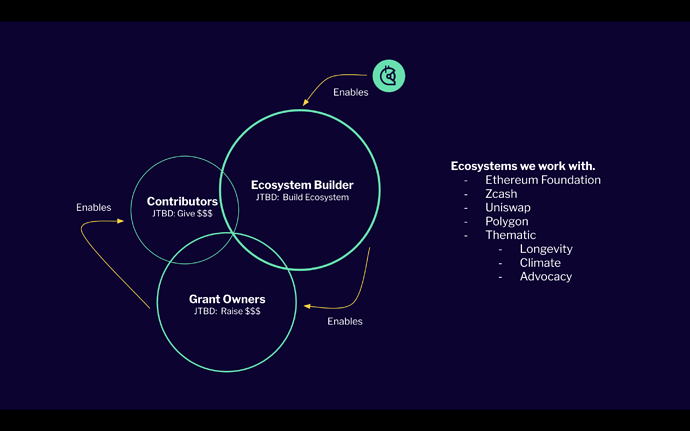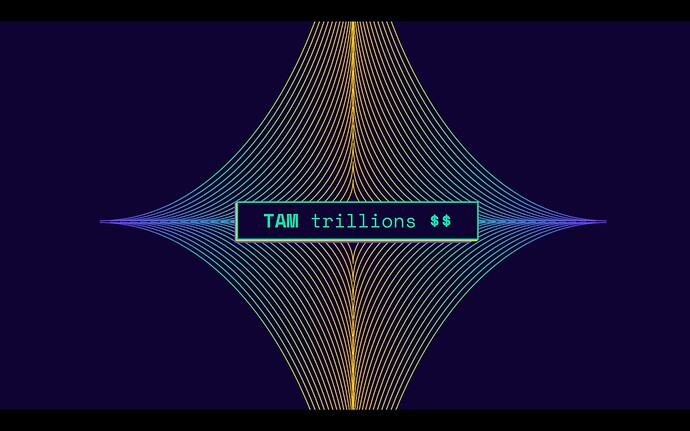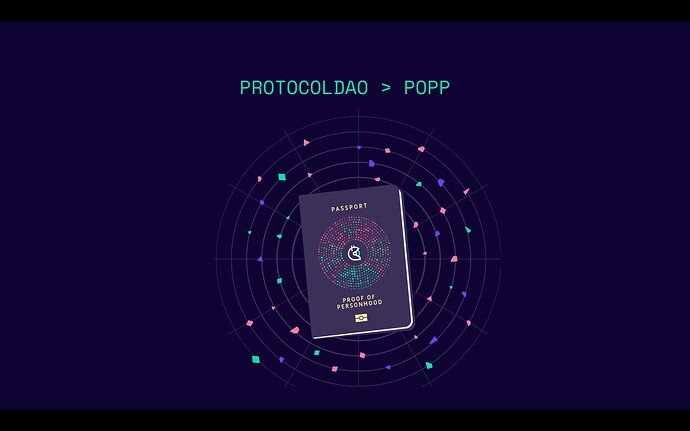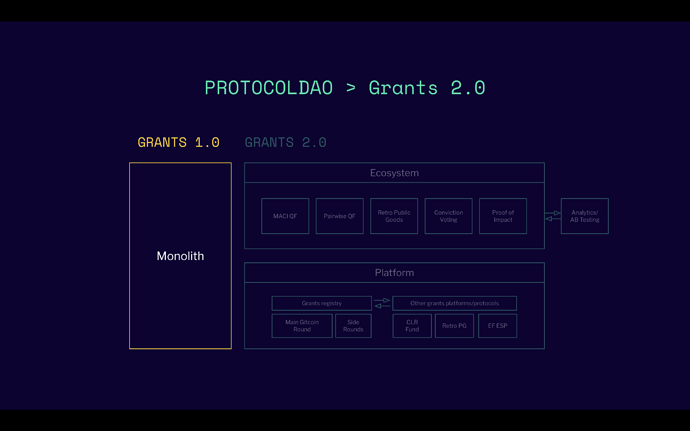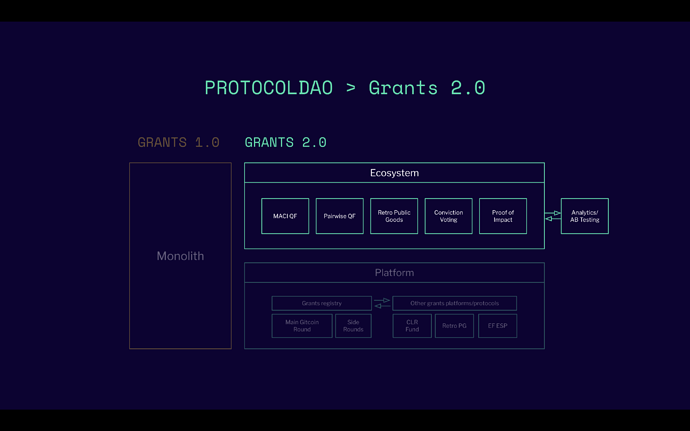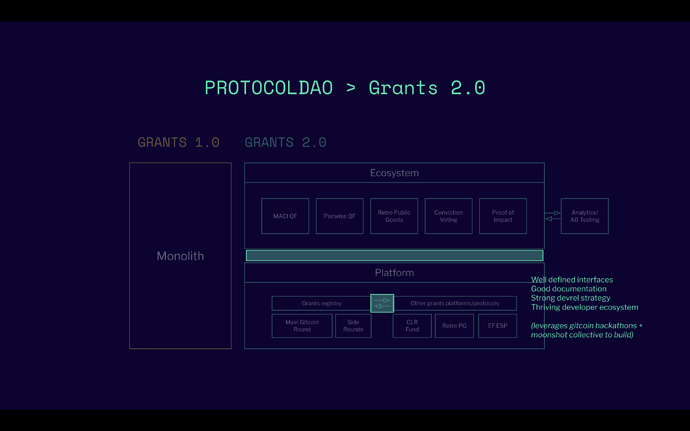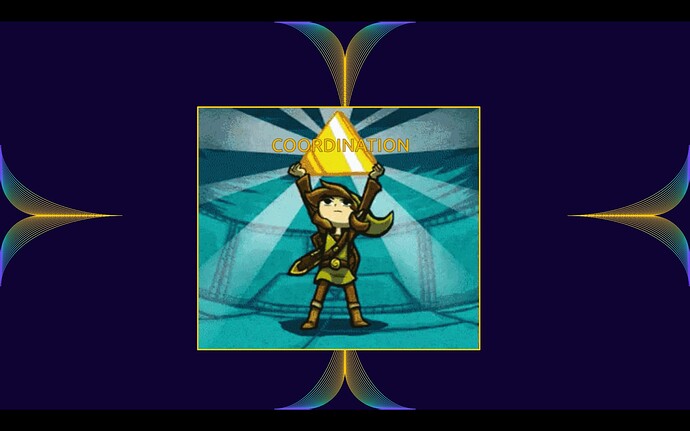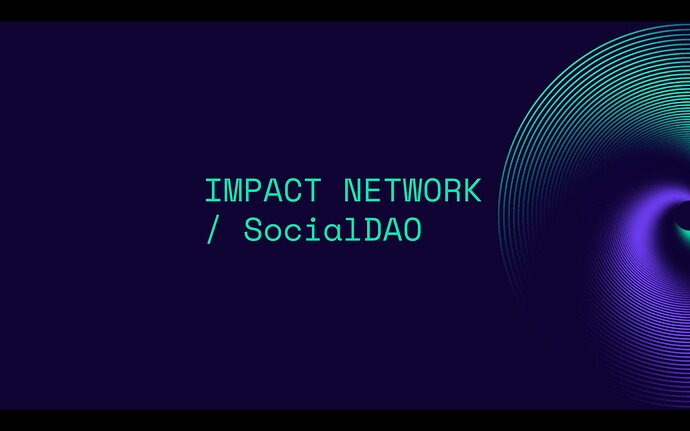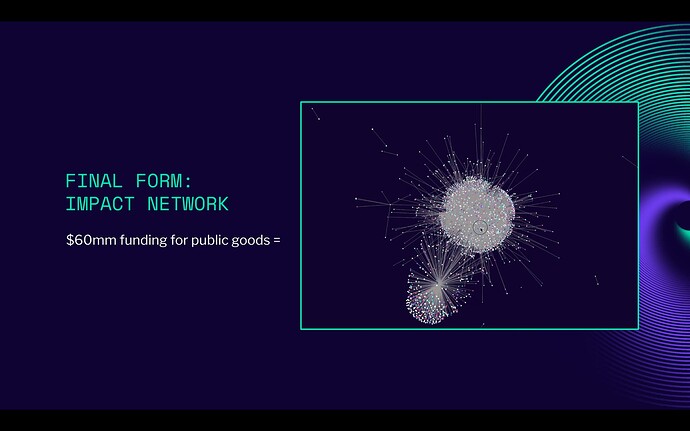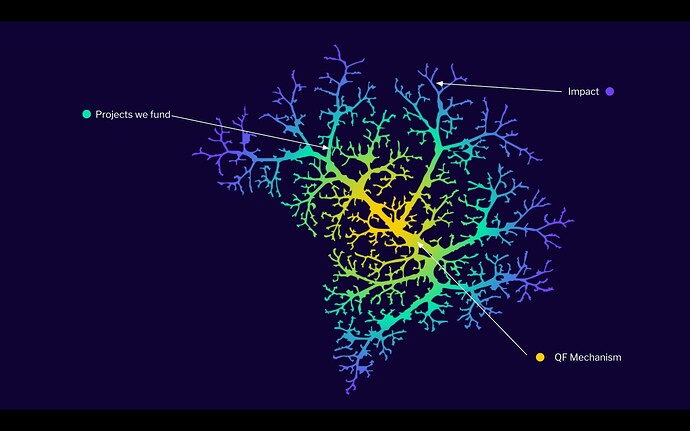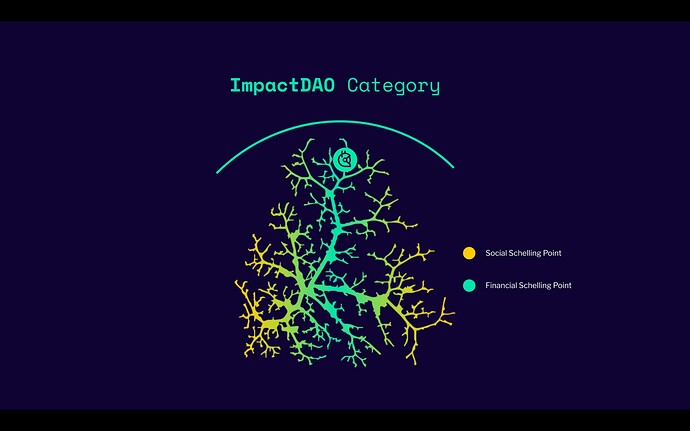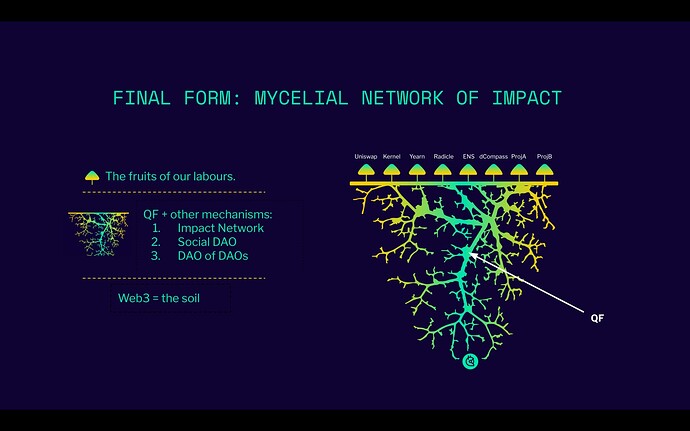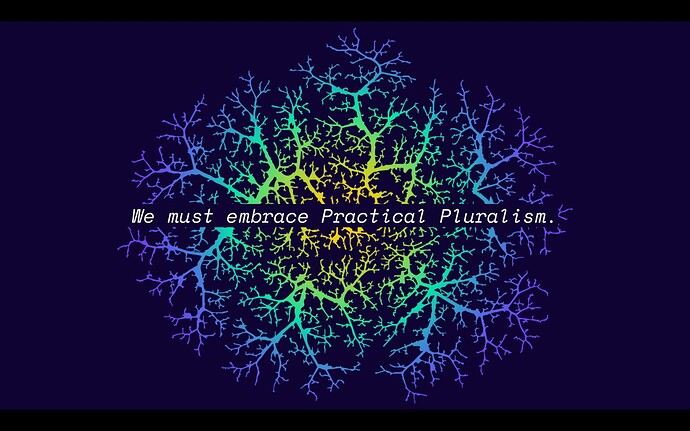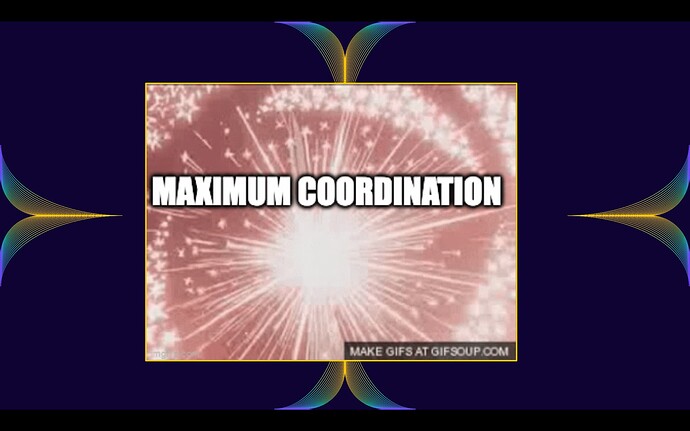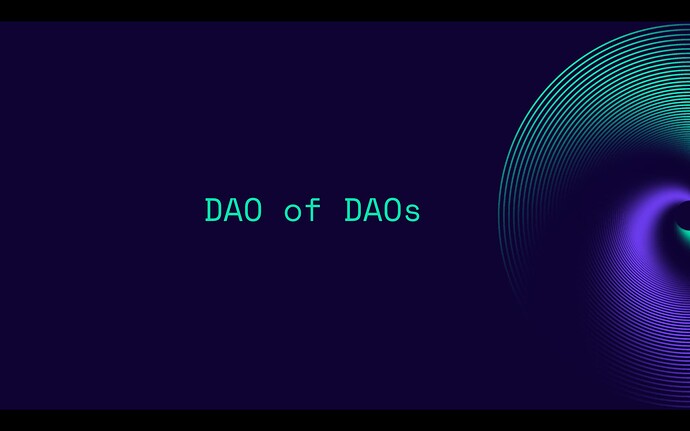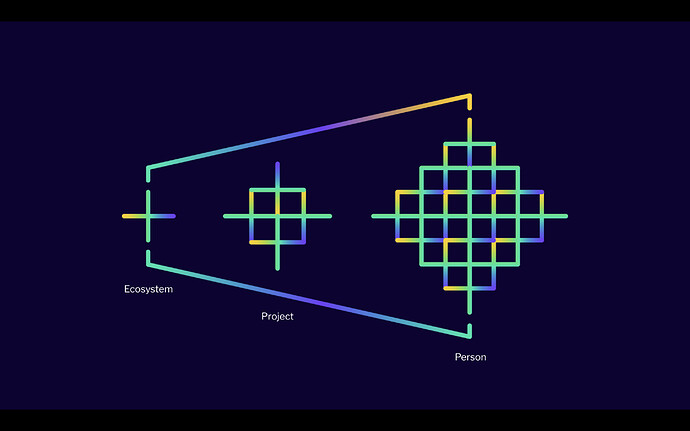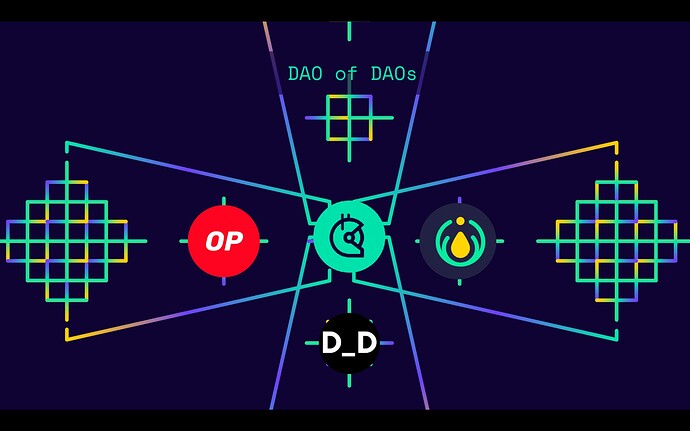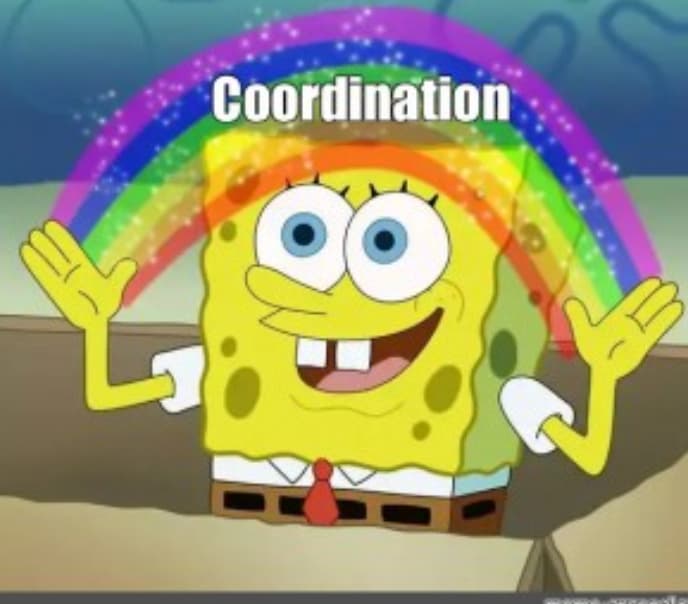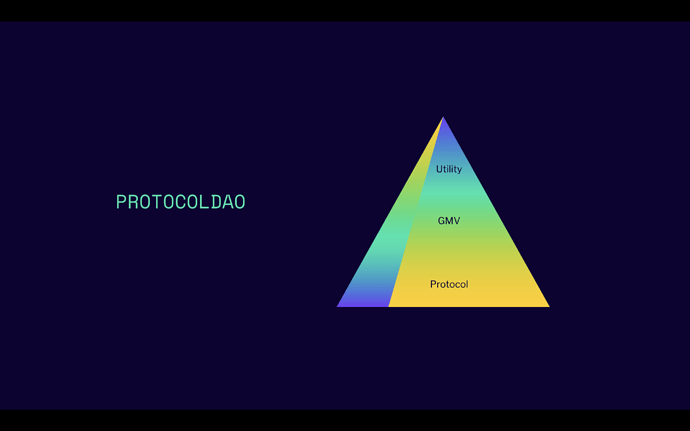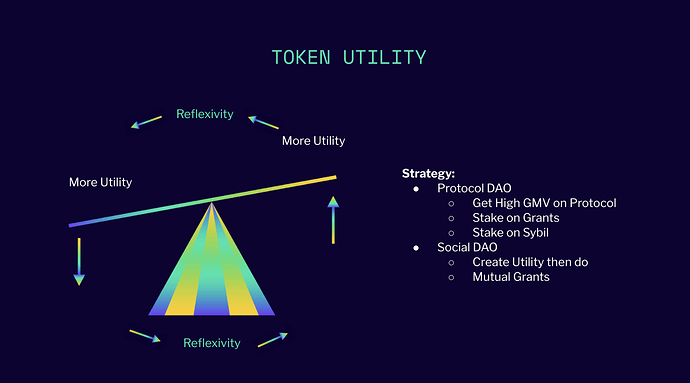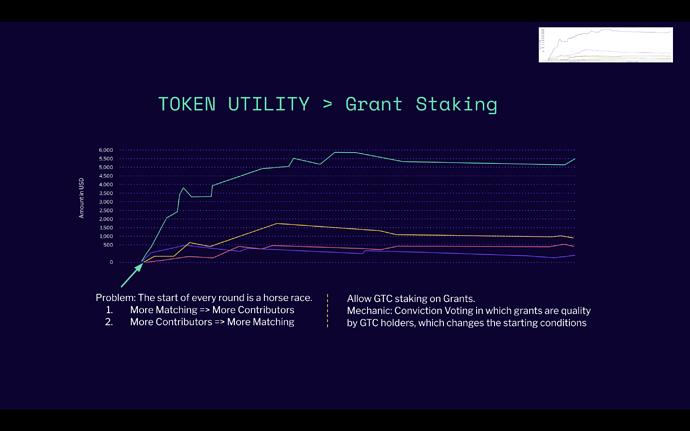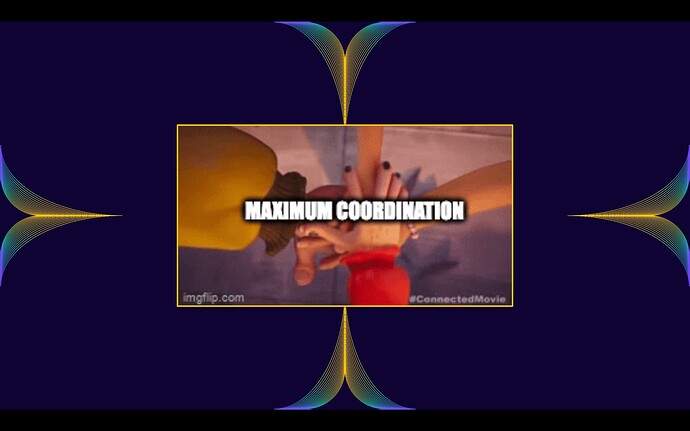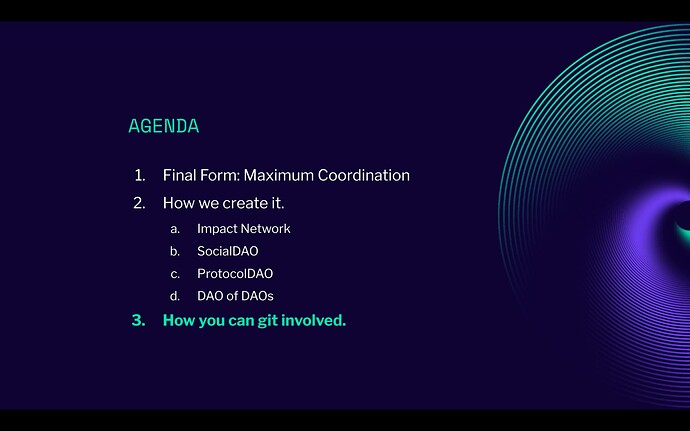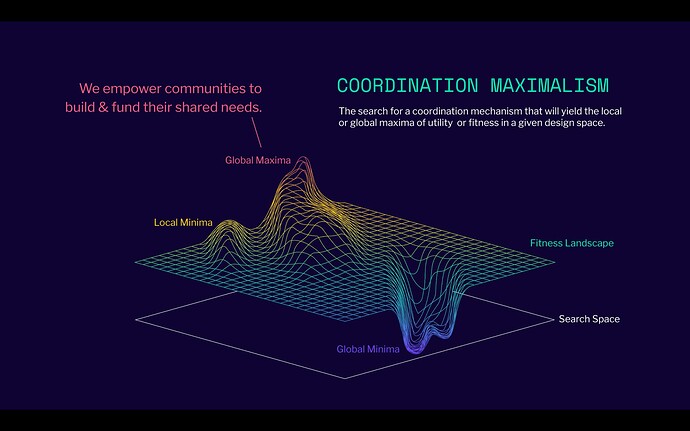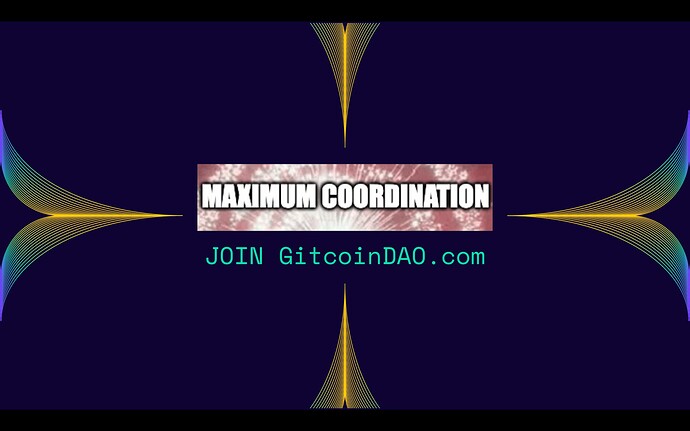I wrote a talk that I’ll be giving soon about how GitcoinDAO’s final form is creating the maximal amount of coordination possible. By creating coordination within the ecosystems it serves, this allows the comunities it serves to meet their shared needs.
I’ll be giving this talk at a few upcoming conferences, and I wanted to write a post about it to get feedback from yall.
My goals for this talk:
- Build on the Its all coordination meme, and talk about a world with maximum coordination.
- Articulate the depth & meaning of the Gitcoin network in high resolution.
- Create more context in the ecosystem about what Gitcoin’s final form looks like.
- Entertain. The graphics in this talk are by @octaviaan . He is awesome!

As always, please remember I am just one node in the DAO network - and I have perspective given how long I’ve been in the project, but the governance of the actual final form of GitcoinDAO (and other matters of import to the DAO) are up the governance process. In that sense, this talk is just meant to stimulate convo about the above.
Without further adeau,
The Agenda of the talk:
I plan to start the talk by asking how many people in the audience have gotten coins on Gitcoin. This is always a joy, because inevitably many hands come up. And we get a visceral read of how Gitcoin is helping people.
Its also nice to engage the audience in the first 3 minutes of a talk. Give them a chance to connect with me before they zone out into their phones ![]()
YES! Were already headed towards maximum coordination!
Our north star is to empower communities to build & fund their shared needs. This creates a systemic incentive for the worlds agents (humans, AIs) to care for humanities shared needs.
Imagine a world in which we’ve maximized coordination. That probably means that people can quit their corporate or private sector jobs and work on the commons, work in their community, and work on public goods.
Over time, Gitcoin has evolved in how it meets that north star. Starting in 2017 with Bounties + Hackathons, to KERNEL, to Gitcoin Grants, and GitcoinDAO.
Many of these experiments didnt work and we learned from them. But some of them did, and are cornerstones of the Gitcoin portfolio today (Grants, KERNEL, Hackathons).
In some ways - You can think of this journey as the exploration as a hill climbing problem. Its the exploration of a search space looking for a global maxima. This whole time were looking for a mechanism that would allow us to meet the global maxima of what was possible. (MAXIMUM COORDINATION!)
Note: When I talk about meeting this global maxima, I’m not just talking about financial outcomes. Im talking about outcomes on many different types of capital vectors. Financial, but also social, intellectual, and experiential.
I’m a big believer in tensor money - basically money that can represent all different types of values (not just the most global commodified value that is represented in the USD)
To learn more about these 8 forms of capital click here.
Here’s another way of displaying this idea. We were enumerating the possibility space of whats possible with web3, looking for a mechanism (an f(x)) that would maximize the ability for us to help communities meet their shared needs.
We were looking for MAXIMUM COORDINATION!
Another way of articulating this is as follows:
- Coordination - the ability to turn resources into outcomes - is our means. By maximizing coordination, we can meet our ends
- Shared Needs - Meeting shared needs, the mutual need among a community of humans, is the end. By coordinating, we can meet this end. (Previous versions of our mission have articulating this as “public goods” or “creating positive impact” - both of these things are examples of meeting shared needs)
YES! Maximum Coordination here we come!
Lets move on to discussing how we create this world of maximum coordination.
There are four pillars to GitcoinDAO that I want to talk about here.
The first is our protocolDAO. The protocol-ized version of our flagship Quadratic Funding product.
What does this protocol DAO?
- The protocol enables ecosystem builders to build their ecosystems.
- It accomplishes that by enabling projects in those ecosystems projects (grant owners) to raise money.
- It accomplishes that by allowing (and incentivizing) contributors to give to the projects in that ecosystem.
In this you could say Gitcoin is a 4 sided market: Gitcoin ![]() Ecosystem builder
Ecosystem builder ![]() Grant Owner
Grant Owner ![]() Contributor
Contributor
The market opportunity here is already proven out, with Gitcoin Grants 1.0 having delivered $60m worth of results to the communities it serves. Vitalik Buterin once said Gitcoin Grants is establishing itself as a significant pillar of the Ethereum ecosystem that more and more projects are relying on for some or all of their support. - This protocol is allowing Gitcoin to take what its done for the Ethereum ecosystem and create maximum coordination in other adjacent ecosystems.
It should be said that the total addressable market for this is very very very high. If you take a holonic view of the world, there are thousands of ecosystems would there that could benefit from this protocol. These ecosystems could be:
- web3 communities with shared needs
- digital communities with shared needs
- physical communities with shared needs
The first protocol we will be releasing is Proof of Personhood Passport - a sybil resistance aggregator that allows contributors to stack their decentralized identity from multiple different identity mechanisms. Producing sybil resistence for the entire ecosystem, including Gitcoin Grants.
Sybil resistance is a foundational part of creating a more democratic internet, and Gitcoin needs to build this money lego as part of it’s protocol build out bc Quadratic Funding which Gitcoin Grants is built upon, requires sybil resistence.
Using Proof of Personhood passport, any dApp will be able to find the Personhood Score (basically a cost of forgery for that identity in dollars) by passing in an Ethereum address that has signed into their dApp.
Proof of Personhood Passport will enable our second suite of protocols: Grants 2.0.
As opposed to Grants 1.0 which was a centralized monolith, Grants 2.0 will be decentralized and modular. This will allow for
- it to be a money lego like any other money lego, enabling composability
- stronger credible neutrality at the base layer of the protocol.
- stronger forkability - anyone can fork + implement their on Grants 2.0
- easier maintainability - as you no longer have to worry about a whole large codebase to change one modular.
The foundation of Grants 2.0 is a highly liquid grants registry, which can be interoperable with other registries of grants. By building for interoperability with other registries of Grants, we can (1) increase the liqudity of Gitcoin Grants 2.0 registry, and also allow enable more practical pluralism in supporting other grants programs.
Once grants 2.0 registry is launched, we will have created an environment where the community can test different public goods funding mechanisms on top of a deeply liquid registry of grants. This tool will allow us to speedrun the “hill climbing problem” of finding optimal democratic mechanisms for helping communities meet their shared needs.
Using these mechanisms we will achieve maximum coordination!
Note that this may mean that we test other flavors of QF, or even incentive mechanisms that aren’t QF. One could build pairwise QF, MACI QF, retroactive public goods funding, dominance assurance contracts, or effective altruism on top of it.
A deeply rich and active marketplace of Grants plugins will allow this layer of the stack to be successful.
To me this means
- Well defined interfaces
- Good documentation
- Strong devrel strategy
- Thriving developer ecosystem
(likely leverages gitcoin hackathons + moonshot collective to build this out)
The ProtocolDAO is just one way that the DAO reaches MAXIMUM COORDINATION!
The next part of the network I want to talk about is the Impact Network/ Social DAO.
Gitcoin Grants has enabled over $60m worth of funding for digital public goods. Since its launch in November 2017 , Gitcoin has helped 76,101 funders reach an audience of 313,751 earners. Gitcoin has facilitated 2,048,770 complete transactions to 10,433 unique earners.
When you lay these transactions out in a graph, where
- the edge of the network is a transaction
- each user is a node
You start to see the dense network of preferences being expressed by the community on Gitcoin Grants.
This is our Impact Network.
This Impact Network is biomimetic insofar as it resembles a mycelial network.
A mycelium network is an underground network of fungi that is naturally occuring in forests. It acts like an internet network but instead of moving electronic information around, they transport water and chemicals to keep the trees alive and communicating with each other.
Our Impact Network is like a mycelial network for the projects we support.
The primary artery in this network is our ProtocolDAO, powered by Quadratic Funding. But these arteries also have branches out into the projects we fund, which then has positive impact on the everyday people in these communities.
Remember our north star? We help communities meet their shared needs. This network is that north star being reached in practice.
One thing thats important to remember here is that this network is not just financial, its social. It’s deeply human.
Gitcoin passes financial resources around via QF, but it also passes around intellectual/social capital as well, through regularly convening people to talk about our mission - hosting twitter spaces, IRL events, and running podcasts about our mission.
What makes Gitcoin work is the people in the ecosystems it serves. A set of dedicated people from all over the world who each care about our mission and contribute to it in their own way.
This social and Impact network acts as a public good for the space itself. By creating a category for Impact projects, we help ImpactDAOs find each other, recruit, and tell the story of a movement that is larger than itself. We also articulate externally how web3 could be good for the world!
In some sense, I think that this network in it’s final form becomes a mycelial network of Impact for the space. The fruit of this network is the projects it funds, and the communities who we’ve helped meet their shared needs.
I think its important for us to stay humble and realize we are not the only other impact network out there. We should embrace those other impact networks via Practical Pluralism, the philosophy of embracing other projects with similar missions.
Through social interop, technical interop, and possibly governance interop via mutual grants with other projects that also create impact in their own way, we get closer to achieving
MAXIMUM COORDINATION!!!
At scale, I think that these networks become a DAO of DAOs.
Again taking a holonic view, each ecosystem that we help meet its shared needs, has projects and people who are being affected by our work.
If you look at each project that we partner with, via Practical Pluralism, in the same way, the end result is a DAO of DAOs. A densely integrated network of projects and contributors that all rise and fall together. A mega-impact network.
This of course means MORE COORDINATION!
The central coordination mechanism for the GitcoinDAO node in this DAO of DAO network is GTC - the governance token of GitcoinDAO.
GTC is built on top of this ProtocolDAO + Impact Network + DAO of DAOs, and has (or in some cases, will have) utility because of those foundations.
The protocol having a lot of GMV (Gross Marketplace Value) on it creates opportunities for GTC to have utility.
There is a roadmap to give GTC more utility here.
Here it is in broad strokes.
As the network grows, and governance problems are solved via GTC Utility, this creates more growth. This is a virtuous cycle that reinforces itself like a network effect.
I believe in creating useful token utility by solving problems in the network.
The problem Id like to see solved: The start of every round is a horse race with a runaway dynamic to it.
- More Matching => More Contributors
- More Contributors => More Matching
In this graph, you can see this runaway dynamic at the start of a Grants round where 4 grants are competition for matching and the one that gets a head start never gets caught.
I think an interesting dynamic for this would be to allow GTC staking on Grants. The mechanic: Conviction Voting in which grants are quality by GTC holders, which changes the starting conditions of each round according to what governance rights holders have.
Here is a prototype of this system that has been built: GTC Conviction Voting dApp => GTC Utility - #2 by DanieleSalatti
Another problem to solve: Quadratic Funding is dependent on unique identities. If Sybil Attackers infiltrate the system, they can shift the governance towards their ends.
I think a way to solve this could be to allow GTC staking on identities. The mechanism would be Proof of Personhood Passport which ingests multiple anti-sybil sources creates higher cost of forgery in the system. We add GTC Staking to it, which allows for a new source of anti sybil crypto economics. The use case would basically be:
- Stake GTC on your identity or your friends identities.
- That increases their cost of forgery which allows them to get more Gitcoin Grants matching.
- As POPP integrates in more places, this has more utility in more places.
- This incentivizes more staking, creating a virtuous cycle of more utility for GTC and more sybil resistance for the ecosystem.
Of course, if someone stakes GTC on a false identity, I believe there should be some sort of slashing mechanic for that. Perhaps a Kleros court where anyone can contest whether a user is sybil or not.
Through GTC Utility, we enable the DAO to create MAXIMUM COORDINATION!
This brings us to the final part of the talk - how can people get involved in this mission?
How can you be a part of creating coordination maximalism? Help us find the global maxima of empowering communities to reach their shared needs?
The way you can join this crew, and create coordination for the world, is to go to https://gitcoindao.com/ and explore what were up to.
/ fin
(here is the gif on that last slide)

